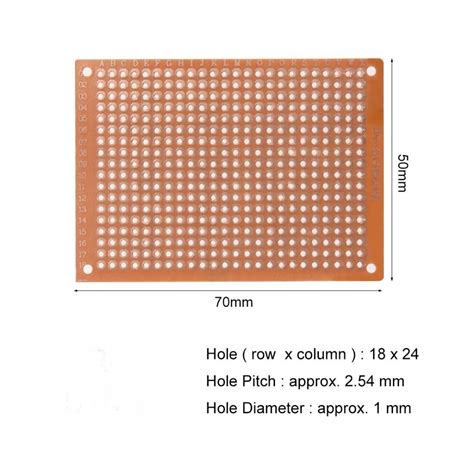What is PCB Copper Weight?
PCB copper weight refers to the thickness of the copper layer on a printed circuit board (PCB). It is typically measured in ounces per square foot (oz/ft²) and ranges from 0.5 oz/ft² to 4 oz/ft². The copper weight directly impacts the current carrying capacity, heat dissipation, and mechanical strength of the PCB.
Common PCB Copper Weights
| Copper Weight (oz/ft²) | Thickness (mils) | Thickness (μm) |
|---|---|---|
| 0.5 | 0.7 | 17.5 |
| 1 | 1.4 | 35 |
| 2 | 2.8 | 70 |
| 3 | 4.2 | 105 |
| 4 | 5.6 | 140 |
Factors to Consider When Choosing PCB Copper Weight
Current Carrying Capacity
The current carrying capacity of a PCB is directly proportional to its copper weight. Thicker copper layers can handle higher currents without experiencing excessive heating or voltage drop. The table below shows the approximate current carrying capacity for different copper weights:
| Copper Weight (oz/ft²) | Current Carrying Capacity (A/in) |
|---|---|
| 0.5 | 2.5 |
| 1 | 5 |
| 2 | 10 |
| 3 | 15 |
| 4 | 20 |
When selecting a copper weight, consider the maximum current your PCB will need to handle and choose a thickness that provides an adequate safety margin.
Heat Dissipation
Thicker copper layers also provide better heat dissipation, which is crucial for high-power applications or components that generate significant heat. Better heat dissipation helps maintain the PCB’s structural integrity and prevents premature component failure.
Mechanical Strength
Higher copper weights contribute to the overall mechanical strength of the PCB. This is particularly important for boards that will be subjected to mechanical stress, such as those used in automotive or aerospace applications.
Cost and Manufacturing Considerations
Increasing the copper weight of a PCB also increases its manufacturing cost. Thicker copper layers require more raw material and longer etching times, which can impact the overall production time and cost. Additionally, some PCB manufacturers may have limitations on the maximum copper weight they can process.
How to Apply the Appropriate PCB Copper Weight
Step 1: Determine the Current Requirements
First, identify the maximum current your PCB will need to handle. This information can be obtained from the datasheets of the components you plan to use and the overall system requirements. Make sure to consider any potential current spikes or transient conditions.
Step 2: Calculate the Required Copper Weight
Once you have determined the maximum current, use the table provided earlier or consult with your PCB manufacturer to select an appropriate copper weight that can handle the required current with a safety margin. For example, if your PCB needs to handle 8A, a 2 oz/ft² copper weight would be a suitable choice.
Step 3: Consider Heat Dissipation and Mechanical Requirements
Evaluate whether your PCB has any specific heat dissipation or mechanical strength requirements. If your PCB will be subjected to high temperatures or mechanical stress, consider increasing the copper weight to improve its performance and durability.
Step 4: Evaluate Cost and Manufacturing Feasibility
Consult with your PCB manufacturer to determine the cost implications and manufacturing feasibility of your chosen copper weight. If the cost is prohibitive or the manufacturer has limitations, consider alternative designs or compromises that can still meet your performance requirements.
Step 5: Specify the Copper Weight in Your PCB Design Files
When creating your PCB design files, make sure to clearly specify the desired copper weight for each layer of the board. This information should be communicated to your PCB manufacturer to ensure that the final product meets your specifications.

Frequently Asked Questions (FAQ)
1. What is the most common PCB copper weight?
The most common PCB copper weight is 1 oz/ft², which provides a good balance between current carrying capacity, heat dissipation, and cost for most applications.
2. Can I mix different copper weights on the same PCB?
Yes, it is possible to use different copper weights on different layers of the same PCB. This can be useful for optimizing the design for specific requirements, such as using thicker copper for power planes and thinner copper for signal layers.
3. What happens if I use a copper weight that is too low for my current requirements?
Using a copper weight that is too low for your current requirements can lead to excessive heating, voltage drop, and potentially damage to the PCB and its components. Always choose a copper weight that can handle your maximum current with an appropriate safety margin.
4. Can I use a higher copper weight than necessary?
While using a higher copper weight than necessary will not harm your PCB’s performance, it may increase the manufacturing cost and complexity unnecessarily. It is best to choose a copper weight that meets your requirements without adding unnecessary expense.
5. How does the copper weight affect the PCB’s impedance?
The copper weight can affect the PCB’s impedance, particularly for high-frequency signals. Thicker copper layers have lower resistance and can help maintain a consistent impedance across the board. However, the copper weight’s effect on impedance is less significant than other factors, such as the dielectric material and trace geometry.
Conclusion
Selecting the appropriate PCB copper weight is crucial for ensuring the optimal performance, reliability, and cost-effectiveness of your printed circuit board. By considering factors such as current carrying capacity, heat dissipation, mechanical strength, and manufacturing feasibility, you can make an informed decision that meets your specific requirements.
Remember to consult with your PCB manufacturer throughout the design process to ensure that your chosen copper weight is compatible with their capabilities and to identify any potential issues early on. By following the steps outlined in this guide and working closely with your manufacturer, you can apply the perfect PCB copper weight for your application.

No responses yet